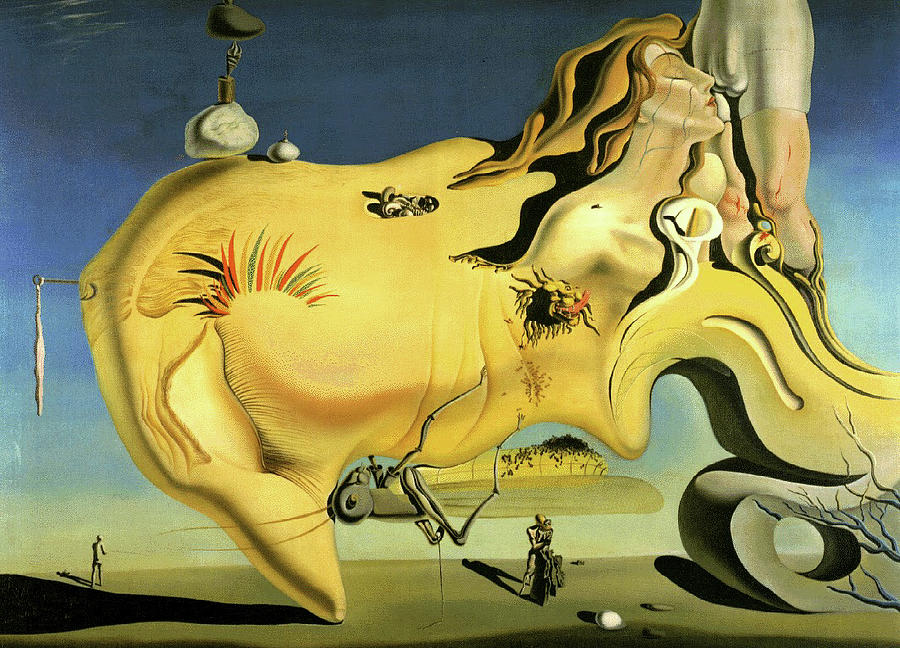The Great Masturbator, 1929 by Salvador Dali

The Great Masturbator is a kind of psychic snapshot of where the 25-year-old Dali was at the time he painted this large work, The central image is the widely-seen rock at Cullero, on Cape Creus in Spain, which Dali likened to a head with its nose pressed to the ground. It has become a bizarre kind of self-portrait of the artist, most universally recognized in his iconic masterpiece, The Persistence of Memory.
The large head of the masturbator is one of the various personifications of the artist, who appears in several simultaneous scenes in the painting, reflecting the spiritual and erotic transformation that Dali had just gone through as a result of Gala's appearance in his life. This disturbing composition also shows Dali's fantasies reaching a zenith, especially with regard to the motif of the grasshopper suckling the principal metamorphosed figure, since Dali had from early childhood always had a particular terror of the insect.
In The Great Masturbator, then, Dali lays bare some of his inner thoughts: his fears, personal anxieties, persistent obsessions. The great masturbator rock-head was to appear again and again in future paintings by the Surrealist master, becoming one of the most obsessive and ubiquitous of the various images unique to Dali's style and paranoiac-critical interpretations of his one-of-a-kind world.























